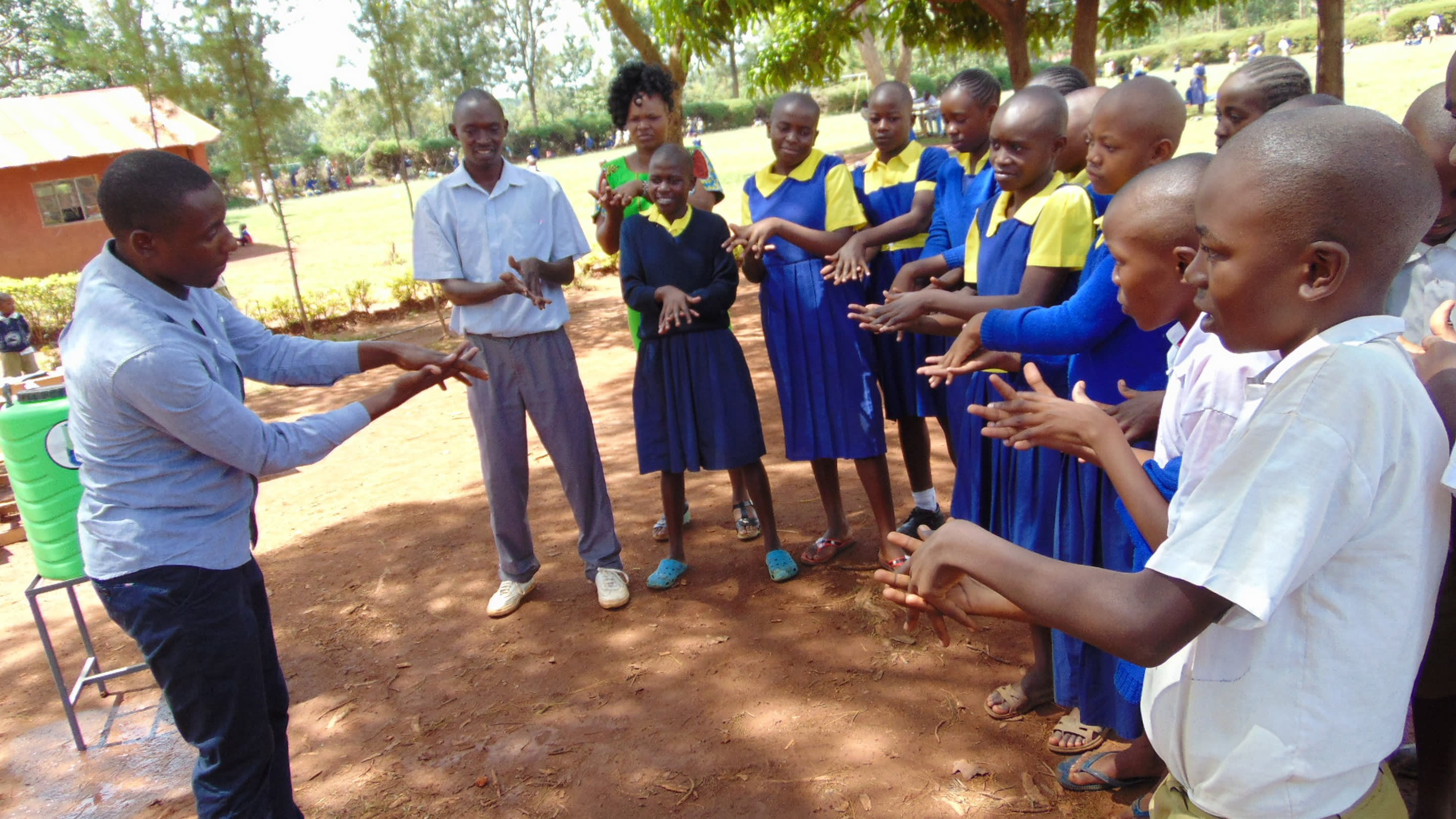There are 738 students attending Essongolo Primary School.
A day for a pupil attending Essongolo Primary School starts as early as 6am when they wake up. Some of the pupils narrated that they have chores to accomplish before they embark on the journey to school. Some have to care for the cows while others have to fetch water for home use before going to school. They walk to school with whatever the teacher might have demanded them to carry to school the previous day - most of the time it being water, since the school doesn't have water of its own.
There is a hole found on school property. The school says the government intended to make this a borehole, but only the drilling was done. No pipes were fitted and nobody has ever explained to the school why the project stalled. Calls to their offices have been futile.
That means students have to get their water elsewhere. Students most often get their water from a spring in the community that's about two kilometers away from the school. The journey is not only long, but the terrain is bumpy and steep as well.
School lessons start at 8:20am with two lessons each taking 35 minutes. This runs them to 9.30 am for their first break which takes 20 minutes. The lunch program is only for pupils in class six, seven, and eight. Other pupils have to run back home from their lunch. Some are privileged to find something to eat while others will just run back to school on an empty stomach since the parents could not afford anything for lunch.
With orders from the teacher on duty, the pupils have to come back with water. After all the lunch hour struggles with many coming in late, they settle down at 2pm for afternoon classes.
The school has a central room where students put all of their water containers. They then run this water through filters so that they can more safely drink it.
Mr. Oriedo, a teacher in this school, says:
The lack of water in school affects our school hygiene and also our feeding program. Hygiene has highly been affected since you find most of these pupils go the spring barefooted and step in the contaminated water. The same jerrycans they use to fetch the water will again be used to wash the latrines and again wash the plates. We have to interrupt the pupils' learning so that they can fetch water. This has had parents complain of their children always being seen on the road going to fetch water. What has saved us from these chaotic parents is the school's performance. We try our best to ensure the pupils perform in their national (final) examinations. Sometimes when these pupils are released to go fetch water, we get cases of pupils interfering with the community members properties - especially in the farms. They tend to steal farm products that are ready like maize and sweet potatoes. Above all, they miss their classes. The little ones (baby class) sometimes find no water at the LifeStraw containers when the bigger pupils have consumed it all and end up drinking the one available in the containers from the spring.
What we can do:
"Water is the ultimate thing when it comes to sanitation and hygiene. We have had a hard time ensuring that our pupils practice good hygiene with water scarcity," said Headmistress Enane.
"Our children don't wash their hands after visiting the toilet. We can't afford to wash our classes every day due to lack of water. If you look at our pupils' uniforms you will notice that they are mud stains, not because they came in dirty but because they have been scrambling at the spring to fetch water. The situation is just not good."
The ministry of health has already contacted the headmistress about dangerous latrines. If anything isn't done to fix them, the school is at risk of being shut down.
Training
Training on good hygiene habits will be held for two days. The facilitator will use PHAST (participatory hygiene and sanitation transformation), ABCD (asset-based community development), CTC (child to child), lectures, group discussions, and handouts to teach health topics and ways to promote good practices within the school. The CTC method will prepare students to lead other students into healthy habits, as well as kickstart a CTC club for the school.
Handwashing Stations
This CTC club will oversee the new facilities, such as handwashing stations, and make sure they are kept clean and in working condition. The two handwashing stations will be delivered to the school, and the club will fill them with water on a daily basis and make sure there is always a cleaning agent such as soap or ash.
VIP Latrines
Two triple-door latrines will be constructed with local materials that the school will help gather. Three doors will serve the girls while the other three serve the boys. And with a new source of water on school grounds, students and staff should have enough to keep these new latrines clean.
Rainwater Catchment Tank
A 50,000-liter rainwater catchment tank will help alleviate the water crisis at this school. The school will also help gather the needed materials such as sand, rocks, and water from the spring for mixing cement. Once finished, this tank can begin catching rainfall that will be used by the school’s students and staff.
We and the school strongly believe that with this assistance, standards will significantly improve. These higher standards will translate to better academic performance!

 Rainwater Catchment
Rainwater Catchment
 Rehabilitation Project
Rehabilitation Project



































